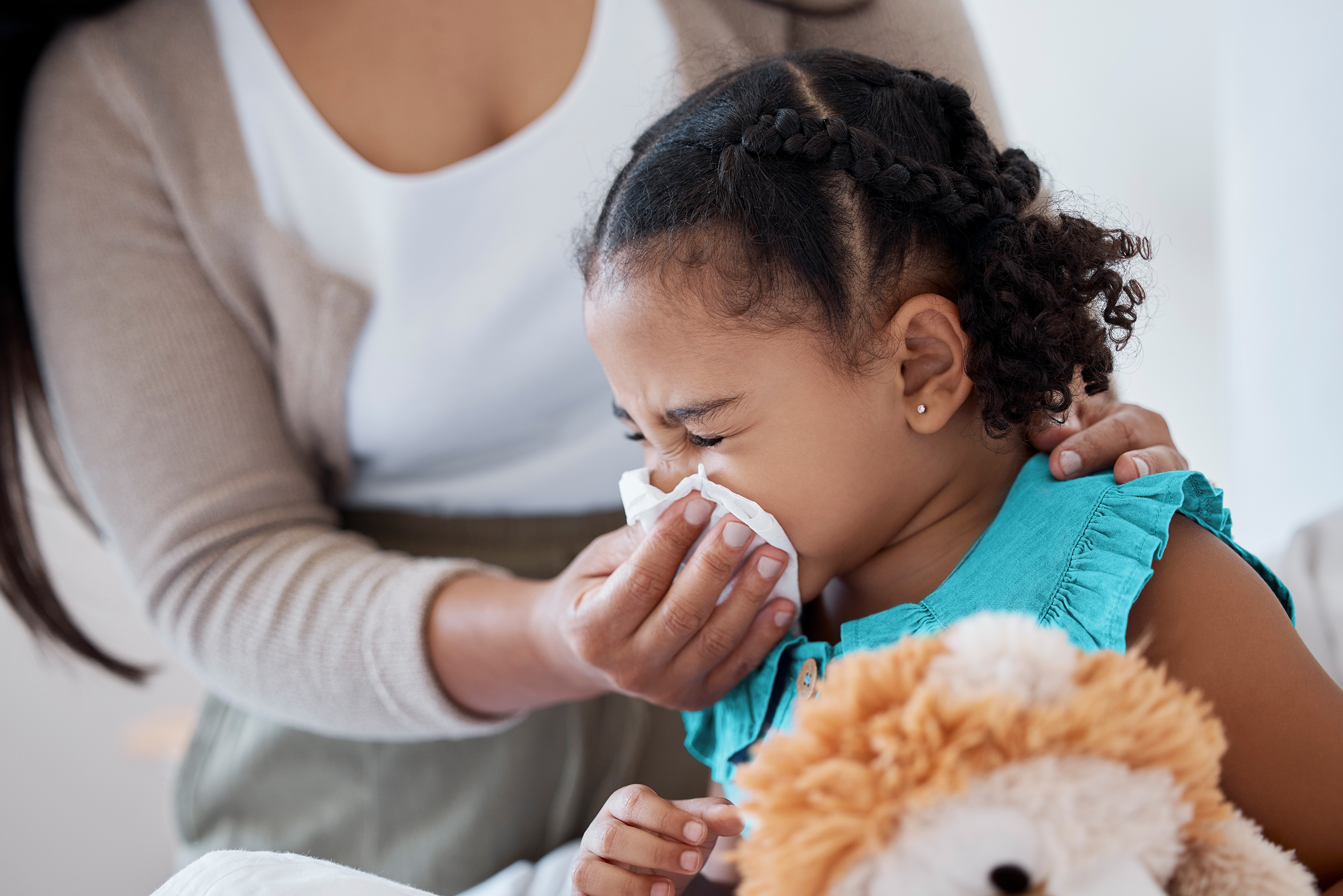
As COVID recedes from its full fury, the enduring rhythm of the seasons returns, and with that, the rise of viral respiratory illnesses– the colds and coughs that inevitably get worse in the fall and winter.
For all our lives the most common causes of these infections have been the respiratory viruses which we are all now so familiar with: influenza viruses, rhinoviruses, RSV, and yes, 4 various coronaviruses. Likely forevermore, we have to add to that list the new, fifth coronavirus, the one that causes COVID.
No matter the name of the respiratory virus, in most situations, the illness they cause is very similar, with the most common symptoms being runny nose, cough, sore throat, fever, achiness. And it is surely the case that every one of these viruses, not only the COVID virus, can cause more serious disease.
So this fall and winter, how do you know when your baby or child has a cold that it is a cold and nothing more serious? The answer turns out to be very simple: see if any symptoms are present that go beyond mild illness, symptoms only really seen when a respiratory infection gets more serious.
The best guide for this is the following two lists. One for mild and one for more serious symptoms.

Symptoms of Mild Respiratory Infections
- Fever (100.8-105.8)
- Runny nose
- Sneezing
- Congestion
- Cough
- Sore throat
- Achiness
- Feeling tired
- Trouble sleeping
- Decreased appetite
Symptoms of Serious Respiratory Infections
- Struggling to get air in and out of the chest
- Blue color to skin
- Severe pain in one spot or part of the body
- Alterations in consciousness. Cannot wake or acting oddly.
- Stiff neck. Cannot move the neck.
- A sense that something very terrible is happening
Use these lists to tell you how worried to be.
Mild illness, even if caused by potentially dangerous germs, are still mild illnesses. If your child only has mild symptoms of illness, and no symptoms of severe illnesses, you have little cause for worry.
What to Do if You See Symptoms of Mild Viral Illness
It turns out that medical science has very little to offer that would actually make a difference to someone with a mild viral illness.
Antibiotics do not work.
What you can do is to keep your child comfortable: lots of fluids, lots of hugging, lots of distractions (videos), perhaps ibuprofen if fever or pain is bothering them.
Science has struggled to develop antibiotic-like medications to clear out viral infections, with limited success. For people over the age of 12 years old, with serious risk from COVID infection, even in the setting of mild infection, Paxlovid can help.
The case of Tamiflu is frustrating. It would be wonderful to have a drug that works for influenza infections as well as amoxicillin does for ear infections, but Tamiflu simply does not. In trial after trial it appears, at best, to reduce the average number of days of symptoms from about 7 to about 6, and that is only if taken less than 48 hours after the first symptom. Finally, Tamiflu has no impact on any viral infection except influenza viral infections.
What to Do if You See Symptoms of Serious Illness
Call your pediatrician immediately.
If severe enough, call 9-1-1 first.
If severe enough, we will recommend immediate evaluation in an ER.
Bottom Lines
- Everyone gets infections from respiratory viruses, and they are more common in the fall and winter.
- The vast majority of such infections are mild, that is, present no danger. The list of symptoms in mild respiratory viral infections is very familiar to all of us.
- Not commonly, mild respiratory infections can turn serious. The symptoms of such infections turning serious all indicate something is no longer working well, as listed above.
- If your child’s respiratory viral infection is mild, we don’t have medications to really end the infection, but comforting is a very powerful good.
- If symptoms of more serious infection appear, get help.

